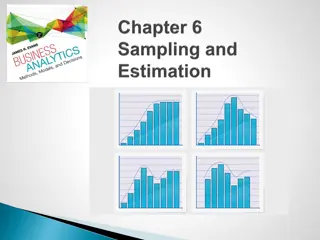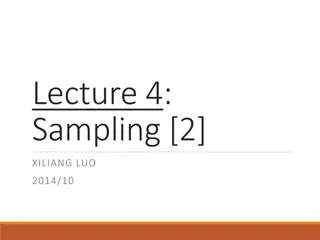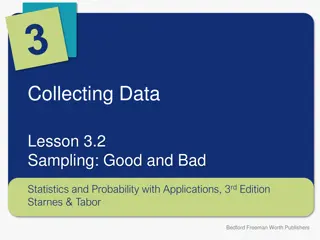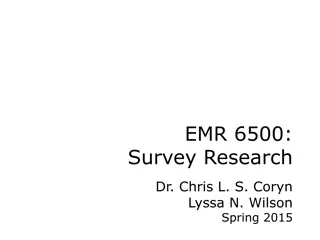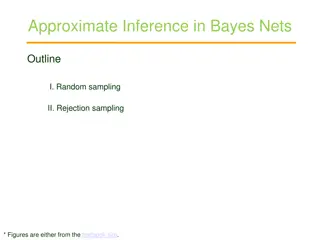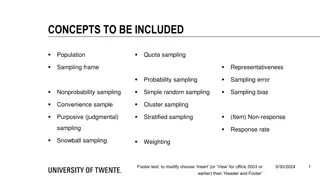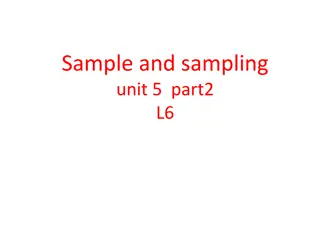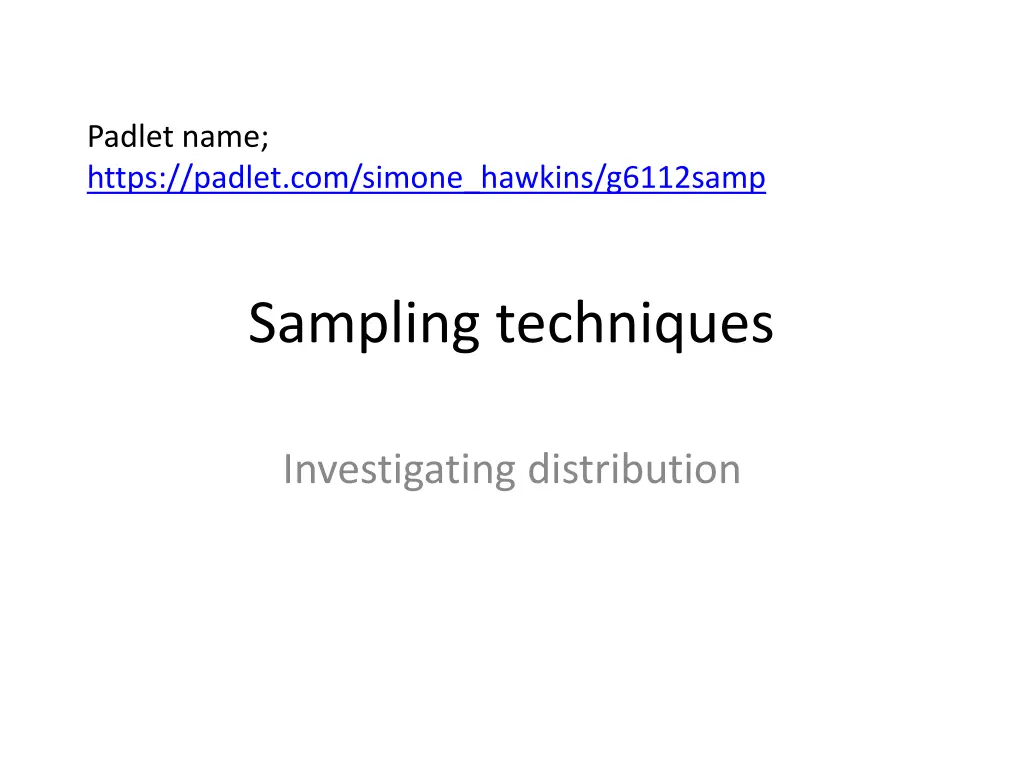
Investigating Distribution and Sampling Techniques
Explore the factors affecting distribution of organisms, key math skills like mean and median, and sampling techniques in ecology. Learn about random and systematic sampling methods, and how to estimate plant numbers accurately in the field.
Download Presentation

Please find below an Image/Link to download the presentation.
The content on the website is provided AS IS for your information and personal use only. It may not be sold, licensed, or shared on other websites without obtaining consent from the author. If you encounter any issues during the download, it is possible that the publisher has removed the file from their server.
You are allowed to download the files provided on this website for personal or commercial use, subject to the condition that they are used lawfully. All files are the property of their respective owners.
The content on the website is provided AS IS for your information and personal use only. It may not be sold, licensed, or shared on other websites without obtaining consent from the author.
E N D
Presentation Transcript
Padlet name; https://padlet.com/simone_hawkins/g6112samp Sampling techniques Investigating distribution
Investigating distribution Last term we discovered that a number of environmental factors will affect the distribution of organisms. What were those factors Temperature Oxygen Carbon Dioxide Nutrients Light Water Can you explain/suggest why these factors affect distribution?
Key maths skills Define the following terms in as few words as possible, then find them for these numbers: 2 4 9 3 5 2 4 2 5 Mean Mode Median Range Mean: add up all the numbers and then divide by the number of numbers (answer: 36/9 = 4) Mode: the value that occurs most often (answer: 2) Median: the "middle" value in the list of numbers when they are arranged in numerical order (answer: 2 2 2 3 4 4 5 5 9) Range: the difference between the largest and smallest values (answer: 9 2 = 7)
Sampling techniques There are two key sampling techniques that you must learn 1) Random sampling using quadrats: in areas where distribution is quite uniform 2) systematic sampling using transects: used to observe changes in distribution across areas of the habitat
Investigating distribution On the next slide you need to find out how many daisies are growing in the field You have 15secs to come up with your own answer
Estimating numbers of plants How many did you count? How did you do it The answer should have been 103 Clearly trying to count the daisies in this way would take to long and be too difficult, so we must estimate the number in a logical way, keeping in mind the need to Avoid bias Get an accurate reading that is representative of the area How could you refine your approach to the above challenge, to get a more accurate value of the number of daisies
1. Divide the area into a grid using tape measures 2. Generate random numbers (using random number tables or a calculator): avoids bias 3. Use pairs of the random numbers as co-ordinates to place the quadrats in the field 4. Use a large number of quadrats to be representative of the area and to improve reliability of the results 5. Count the numbers of daisies in each quadrat 6. Find the mean/average number of daises in each quadrat 7. Multiply the mean number of daisies in 1 quadrat by the total number of quadrats that would fit into the field
Putting it in practise to get a new estimate
12 11 10 9 8 7 6 5 4 3 2 1 0 0 1 2 3 4 5 6 7 8 9 10 11 12 13 14
Try again on the next slide There were 103 daisies in the field. Try estimating the number of daisies again on the next slide Your plan should have involved the following steps: Select at 3 quadrats and count how many daisies are in each find the mean number of daisies per quadrat Multiply the mean by the number of quadrats that would fit into the field to get your estimated total number of daisies. Try this method a second time with three different quadrats, then try it with 6 and see if there is a big difference in your values. Why is it better to use 6 quadrats What is the down side to using 6 quadrats
Problem solving 1. Some daisies are partly in and out of the quadrat Solution 2: count the daises partly in on 2 sides only. Solution 1: count those 50% or more inside the quadrat ignore those less than 50% inside
Problem solving 2. Solution Estimate percentage cover Solution Count all squares that are at least 50% covered and ignore squares that are less than 50% covered Counting the number of a particular species in a quadrat can be difficult if .. like that shown in the diagram?????? How do you estimate percentage cover when you have distribution The problem with this method is that it is quite subjective, so you may get a range of answers There is a large number of the species It is difficult to determine individual plants of the species
Work sheet Do work sheet estimating numbers of daisies
Building a transect Transects are used to investigate how distribution changes across an environmental gradient In other words, how species change as the conditions in the habitat change This can provide insight into what species require for survival
How does species distribution change as you move from inside the woodland out into the open field? First stretch a tape measure from under the trees out into the field this is the transect Q. Suggest some of the key environmental differences between the two areas (abiotic factors) Place quadrats At regular intervals Along the transect How you would create a transect to investigate how the species change lets go through the steps together . Number of a particular species in quadrat(there are 20 daisies) Percentage cover of a species Record the desired information Number of different species in the quadrat (there are daisies, plantain, thistle, dandelions etc) Repeat with more transects to get data that is representative of the area
Why is it important to find the numbers of different species in habitats? To determine the stability of a habitat/ecosystem To look at seasonal changes in species To identify the impact of human influence To identify warning signs about species decline To identify the conditions needed for survival To inform conservation measures





